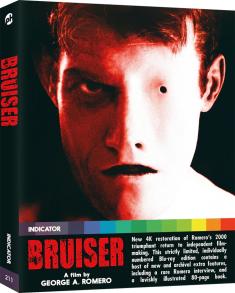Sony UBP-X1100ES 4K UHD Blu-ray Player with HDR
Overview -Overview -
The Sony X1100ES Ultra HD Blu-ray Player with HDR may not be flashy, but it does its job with a minimum of fuss. Excellent processing produces stunning images and its versatility and ease of use make this attractive, well-built unit suitable for both home theater novices and aficionados. The X1100ES supports HDR10, Dolby Vision, and HLG HDR (but not HDR+), streams your favorite content from Netflix, Prime Video, and YouTube, upscales your existing Blu-rays to 4K, and plays high-resolution audio files and discs. Though it may not be a dream machine (a few annoying anomalies detract from its appeal), the X1100ES hits its marks with precision and quality, which earns it an enthusiastic endorsement. Recommended.

Intro
I’ve owned many Sony A/V products over the years - TVs, CD jukeboxes, VCRs, DVD megachangers, a DVD recorder, even - in the days before iPods - a pocket-sized digital music player. If Sony made it, I had it...except for Blu-ray. Why? No specific reason. I just happened to catch the Oppo bug early on and, like many home theater enthusiasts, remained loyal to that brand. Yet now that Oppo has bowed out of the Blu-ray market, I’ve begun sampling the players of other manufacturers. So when opportunity knocked and I was given the chance to review Sony’s newest 4K UHD Blu-ray player, I eagerly opened the door.
A year ago, I reviewed Sony’s HT-Z9F 3.1ch Dolby Atmos/DTS:X Soundbar with optional rear speakers, and liked it so much, I purchased one for my home. Would Sony’s new flagship UBP-X1100ES 4K UHD Blu-ray Player with HDR woo me as well?
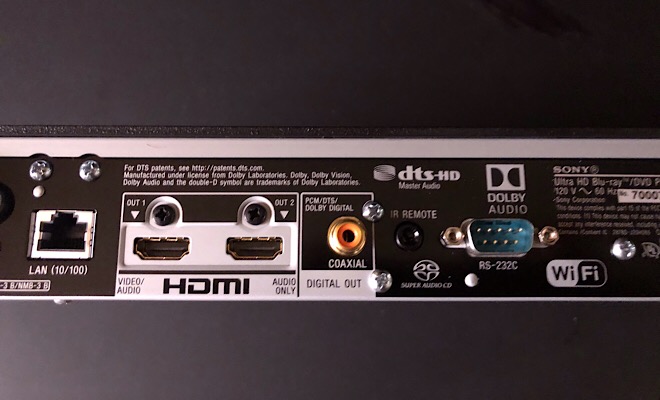
Specs & Design
No doubt about it, the UBP-X1100ES is a quality piece of machinery that improves upon the company’s two-year-old UBP-X1000ES model by adding built-in Dolby Vision support. This high-end player also can bitstream both Dolby Atmos and DTS:X soundtracks, handle 3D Blu-ray discs, stream your favorite video content, and play plenty of high-res audio formats, all for an MSRP of $598.
That price tag might sound a bit steep for a Blu-ray player, but videophiles with splashy displays and suped-up receivers don’t want to skimp on A/V quality, while audiophiles often crave the capability to play high-res music formats. Whereas Panasonic’s excellent DP-UB820 retails for $100 less than the Sony, it lacks support for high-res music. That was a dealbreaker for some consumers, so Sony is smart to attract that customer niche. In addition to supporting Dolby Atmos and DTS:X, the unit also plays SACD and DVD-A discs (as well as several different digital file types) and includes DSEE HX (Digital Sound Enhancement Engine), which can upscale the frequency and dynamic range of MP3s and CDs to near high-resolution quality. A wired connection is required to play true high-resolution audio content via a music server.
The X1100ES measures 19 inches wide by 3.8 inches high by 14.1 inches deep, and weighs just under 10 pounds. The unit is heavier and has a much sturdier feel than the Panasonic, and features a textured surface on top with a glossy band around the sides and front. It’s a sleek, unobtrusive yet attractive machine that seamlessly blends into almost any component rack. The back panel includes two HDMI ports (one is video/audio capable and one is audio-only, so you can connect the video directly to your TV to better preserve the integrity of the signal, if you so choose), coaxial and optical outputs, left and right analog outputs, an Ethernet port, an RS-232C port, and an IR remote port. On the front of the unit, there are power and eject buttons and a pop-out flap that hides a USB port.
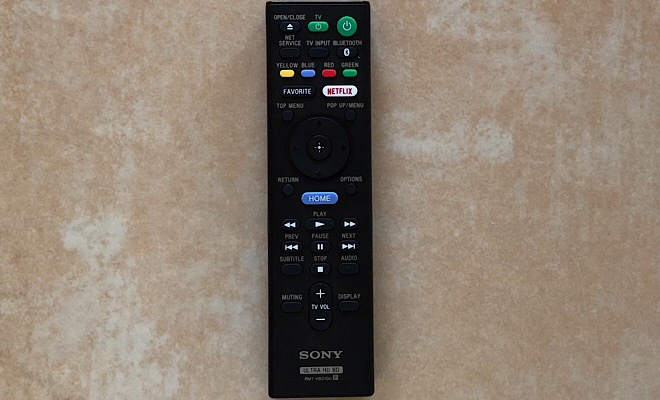
Setup
In addition to the player itself, the box includes a remote (along with two Sony AAA batteries), power cord, 44-page instruction booklets in both English and French, an End User License Agreement, Limited Warranty, and Product Registration sheet. You must supply your own HDMI cable(s). Call me old school, but I really like that Sony still includes a complete physical manual with its product. I find it inconvenient to look up instructions online. I prefer to have a booklet close at hand during setup and like storing it in a convenient place for easy reference.
Once out of the box, it only took a few minutes to connect the X1100ES to my system. I plugged the HDMI cords into my LG OLED65E8P TV and Denon X2300W A/V receiver, and then powered on the X1100ES. The onscreen displays walked me through the setup process, as I selected the language, activated Quick Start Mode for a shorter startup time and network feasibility, connected the X1100ES to my wireless network, and performed the obligatory software update (this one took about six minutes). The home screen then appeared. Options for disc play, USB devices, media servers, and setup can be accessed from the home screen, and there are also icons for Netflix, Prime Video, and YouTube.
I went directly to the Setup menu. Under Screen Settings, there’s a BRAVIA Mode, which supposedly outputs the optimum picture for Sony’s BRAVIA TVs, but since I don’t own one, I turned it off. I set the HDR Output to Auto.
The Dolby Vision setting, however, is a bit more problematic and one of the real hiccups in the makeup of this player. If you select On for Dolby Vision, the unit will automatically detect Dolby Vision content when a Dolby Vision disc is being played, but you sacrifice access to the Video Settings menu during playback and disable the player’s 3D capability. If you leave it Off, then you must manually enable Dolby Vision every time you pop in a Dolby Vision disc. That’s a big problem, at least for me, because I often don’t know whether a disc features Dolby Vision or not. Dolby Vision isn’t always - or even often - listed on the disc packaging. (HDR is plastered everywhere in big, bold lettering, but the Dolby Vision logo, if it’s there at all, is usually relegated to the back cover and a magnifying glass is required to see it.) Most players automatically detect Dolby Vision and display it, but because the X1100ES makes Dolby Vision a choice, it forces me to go online and look up a specific title before I play it to determine whether it supports Dolby Vision. That’s a pain. Then I must go into the settings menu and activate Dolby Vision. That’s also a pain.
So why not leave Dolby Vision in the “on” position all the time? Well, then the X1100ES converts everything - DVD, Blu-ray, HDR - to Dolby Vision. That’s definitely something I don’t want to do, and neither should you if you respect the artistic integrity of the material you’re watching. In the end, neither option is optimal or convenient. Both require some toggling back and forth, especially if you’re a big 3D buff. Because HDR is far more prevalent than Dolby Vision (at least for now), it’s best to leave Dolby Vision in the “off” position. Hopefully, a future firmware update can somehow rectify this unfortunate issue that really hampers the unit’s ease of use. (As of this writing, the X1100ES also does not yet support HDR+. That’s far less important right now, but worth noting.)
Next, there are choices for Display Type (TV or Projector), Output Resolution, 24p Output, 4K Upscaling, YCbCr/RGB, HDMI Deep Color Output, IP Content, 3D Output, and others. I left all the settings at Auto, but the 4K Upscaling menu had two choices, Auto1 and Auto2, neither of which are explained on the onscreen menu. I checked the manual and discovered Auto1 outputs non-4K material at 2K only if the player is connected to “Sony 4K-compatible equipment.” Otherwise, the material is upscaled to 4K. Auto2 upscales all non-4K material to 4K. Bottom line: If you don’t have a Sony TV, basically Auto1 and Auto2 do the same thing. If you do have a Sony TV, however, you do get the option of displaying non-4K material closer to its original resolution. That’s a plus, but I wish it applied to all TV makes and models.
Settings for Audio, Bluetooth, BD/DVD Viewing, Parental Control, Music, System, and Network are all pretty straightforward. There’s a bit of tweaking you can do, but the Auto settings seem to be the way to go for almost all the options. The player also includes a dimmer for its front-panel display lighting, which thankfully can be set to off. If you’re at all like me, you don't want any distracting illuminations interfering with your movie-watching experience.
The remote is quite small, does not feature backlighting, and the design is fairly standard. There's a dedicated Netflix button, as well as a Favorite button, which provides easy access to another application of your choosing. Video and audio options also can be called up with the remote, and of course, it can be paired with your TV as well. At first, manipulating the tiny buttons can be a challenge, but once you get a feel for the remote it becomes much easier.
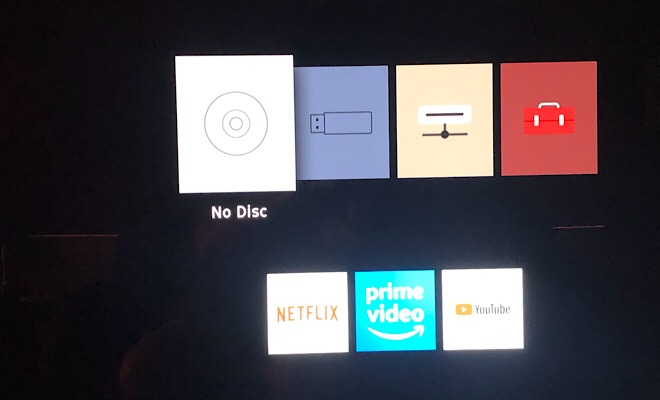
Performance
Features are important, but performance is everything. And, after testing several 4K UHD Blu-ray discs, standard Blu-ray discs, 3D Blu-ray discs, and 4K streaming content, the X1100ES proves its worth. A stunning picture, silky presentation, responsive remote, fast-loading discs, and seamless streaming make this player a winner. Customization tools are a little on the light side, so if you like to tweak every aspect of the image to a fare-thee-well, this might not be the machine for you. Yet if you prefer your experience streamlined and a plethora of optimization choices makes your head spin, you can rest assured the X1100ES delivers a stellar picture right out of the box.
The first 4K UHD disc I popped in was Mission Impossible: Fallout. I sampled a number of scenes in both Dolby Vision and HDR10, but concentrated on the chase through the streets of Paris. Both formats looked great, though the Dolby Vision presentation appeared slightly more vivid and a hair sharper. In addition to a crystal clear picture that highlighted fine details and produced brilliant color, the sequence’s frenetic motion remained smooth throughout. No blur, jutter, or artifacts disrupted the experience. The grit, grime, and sweat of Black Hawk Down were also brilliantly rendered, lending this tense, realistic flick an almost frightening immediacy. Heightened detail levels enhanced the aerial shots, while flying bits of dust and debris during the street fighting scenes almost broke through the screen. The original Alien looked fantastic as well, oozing more creepiness than ever before, with crisp lines, sharp closeups, and an antiseptic coolness amping up the film’s intensity and visceral impact. For a change of pace, I sampled some of Green Book next. The X1100ES showed off this Oscar winner to terrific advantage, displaying an eye-popping array of lush hues and maximizing the clarity of all the period details.
Standard Blu-rays looked mighty nice, too. The 4K upscaling never overwhelmed the images or magnified any flaws. The grain levels of older films - of which I am a fanatical devotee - appeared more pronounced, but that’s to be expected. I sampled some of the Blu-ray version of Crazy Rich Asians and was pleased with the vibrant colors and crisp lines. Ditto (and then some) for Disney's animated Big Hero 6, which delivered plenty of pow with razor-sharp clarity, gorgeously saturated hues, and a wonderful sense of depth. On the black-and-white front, the X1100ES delivered dense black levels, excellent grayscale variance, and film-like texture during a run-through of Alfred Hitchcock's classic 1946 espionage thriller Notorious.
To take a gander at the player's 3D performance, I had to hook up the X1100ES to my LG OLED65E6P display and Sony HT-Z9F soundbar, but the effort was worth it. I was instantly and consistently impressed with the results. Loading was swift and the unit always recognized the 3D content. I sampled bits and pieces of Mad Max: Fury Road, Life of Pi, Hugo, Toy Story 3, and the 3D conversion of The Wizard of Oz, and all of them exuded superior sharpness and vivid dimensionality without any technical glitches or visual anomalies. If you're a 3D enthusiast, you can rest assured the X1100ES will do your discs proud.
Access to streaming services was quick and the presentation was free of any hiccups. Netflix, Prime Video, and YouTube all popped up smoothly and were very responsive to commands. I checked out only 4K content on both Netflix and Prime Video, and the results were impressive. On Netflix, Spider-Man: Into the Spider-Verse looked stunningly crisp and colorful, and the TV series Point Blank practically leapt off the screen, thanks to dazzling detail levels and a palpable sense of depth. Over on Prime Video, the Steve Carell-Timothée Chalamet flick Beautiful Boy appeared lush and life-like, while two TV series, Jack Ryan and The Romanoffs, sported rich hues, superior contrast, and high levels of fine detail. YouTube also responded quickly, and the content was pleasantly smooth and vibrant.
As I mentioned above, the customization tools, which can be accessed on the fly by pressing the Options button on the remote during playback, are somewhat limited, at least when compared to other players. Video settings cannot be changed when watching Dolby Vision content, and brightness options are limited when viewing HDR discs. For instance, four options are conceivably available for different lighting environments - Direct (this is the setting I recommend because it transmits a pure, undoctored image), Brighter Room (which bumps up the picture's intensity in an area with a lot of natural light), Theater Room (for dark environments), and Auto (which applies a slight bit of noise reduction to the image). There are also two custom modes, which include options for reducing random noise, mosaic-like block noise, and mosquito noise (the noise adjustment tools are disabled when playing 3D discs) and adjusting contrast, brightness, color, and hue levels. It's all pretty basic stuff. But here’s the catch. Though all the choices are available for standard Blu-ray discs, for some reason, the Brighter Room and Theater Room settings are not available when watching an HDR disc, and there are no controls for manipulating black and white levels to maximize details. While I'm not prone to making lots of adjustments to every disc I watch, I do like having as much flexibility and as many capabilities as possible in case the spirit moves me, and I found the X1100ES to be a bit lacking in that regard.
Audio playback was clean, bold, and trouble-free. The X1100ES flawlessly bitstreamed both Dolby Atmos and DTS:X tracks. Audiophiles will be especially interested in the unit’s ability to play SACD and DVD Audio discs, but I don’t own any media in those categories, so I was unable to run any tests.
Bluetooth connectivity was troublesome and frustrating. I tried pairing devices to the X1100ES multiple times, but was never successful. Though that's not a feature I personally would ever use with a Blu-ray player, I’m sure many audio enthusiasts would, and I would have liked to see it work for demonstration purposes. I had better success displaying photos from a USB thumb drive.
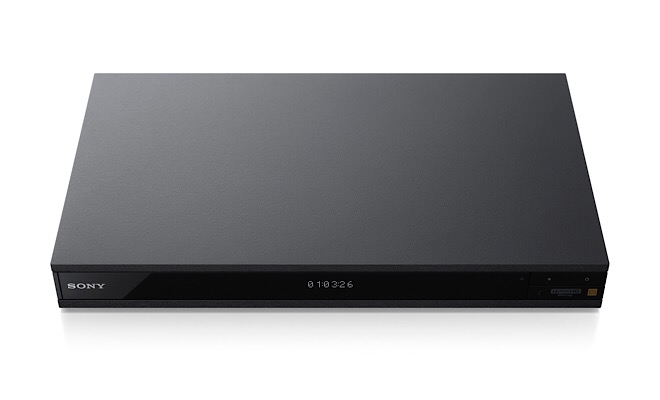
Final Thoughts
Pros
-
Excellent 4K, Blu-ray, and 3D processing
-
HDR and Dolby Vision support
-
High-quality upscaling
-
Sleek design and sturdy build
-
Network streaming
-
Support for high-resolution audio formats
-
Easy setup and use
Cons
-
Picture adjustment tools not as advanced or comprehensive as those on other players
-
Dolby Vision capability must be manually activated
-
Bluetooth connectivity issues
-
No HDR+ support at this time
-
A bit pricier than similar units
All in all, Sony's latest high-end Blu-ray player pleases on many levels. Whether viewing discs in HDR or Dolby Vision, its solid 4K processing brings 4K UHD media to brilliant life, while seamless upscaling helps perk up the picture quality of standard Blu-rays. 3D discs look great, too, and 4K streaming is crisp and efficient. The X1100ES even supports a variety of high-resolution audio formats. If aesthetics matter to you, the player's sturdy build and sleek design make it an attractive addition to your home theater component collection. A few more picture tuning tools, better Dolby Vision integration, more reliable Bluetooth connectivity, support for HDR+, and a lower price tag would amp up the unit's appeal, but if you're looking for a reliable, easy-to-use, and attractive high-end 4K Blu-ray player, the Sony UBP-X1100ES should more than meet your needs and expectations. Recommended.








